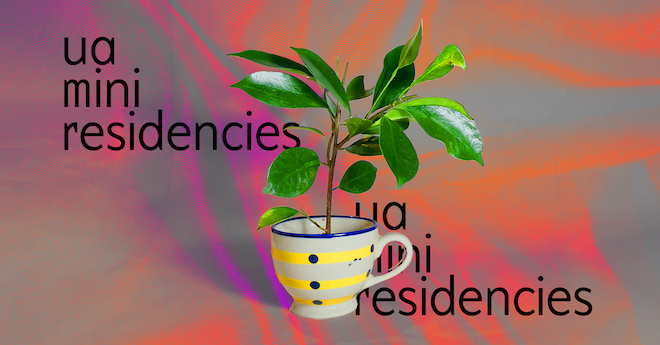A sharing, a demo, a discussion, an outcome – Georgie Goater’s and Arlene Tucker’s residency period for UA Miniresidencies culminates in a public event in SOLU Space where the artists share some of their process and work. Free admission!
During their residency, Georgie and Arlene will be exploring processes of intersemiotic translations specifically from a medium into movement. For example, how would one translate a visual piece to the moving body? How would we embody or physicalise a text using translation? What is our understanding of the message and how could we code, decode, and encode the elements while honouring the source text? By translating, we become more aware of how we receive information and how we want to communicate. Translation is a concrete way to be an activist and grow more awareness of our choices and meaning-making processes. By bringing translation into the body, we understand and practice modes of communication beyond words.
We come from the perspective that we are in a constant state of translating. We will resource Jeremy Munday’s book, ‘Introducing Translation Studies: Theories and Applications’ for creating scores and playful yet critical approaches to translation techniques and theories inpractice with the body. Knowing that together we are inherently diverse and relational, we will have a focused lens on inclusion, accessibility, and belonging, bringing into focus subjectivities within collaboration. How can we draw with our unique embodiments, mobility tools and movement expressions? How can we make ourselves heard through dance and movement?
Arlene has been using translation techniques as a mode to create art, but also to betterunderstand what is being communicated since 2009 through Translation is Dialogue (TID). For the most part, the translations have been visual and textual. Through TID, Arlene has been working with various communities and through different iterations such as residents of elderly homes in Bogota, Colombia and through people affected by incarceration as in FreeTranslation. Georgie has been working with dance art with focus on access and inclusion since 2012. Arlene and Georgie started to think about exploring translation techniques in other ways with the body through movement and dance, to include diverse perceptual knowledge into the translative matrix.
When: 20 April 2024 at 13:45 (duration approx. 90 minutes)
Where: SOLU Space (Panimokatu 1)
Language: English & Finnish
If you are interested in coming to explore with us at SOLU, please reach out to Arlene or Georgie translationisdialogue@gmail.com or georgie.goater@gmail.com. Places are limited! Email Georgie to register. Please note that Ilo, a 3.5 year old Jack Russell terrier, will be joining the event.
Georgie Goater is a dance artist from Aotearoa, based in Helsinki. She was born and grewup bi-lingual in Nagoya (JP) and Ōtautahi (NZ). She performs, choreographs, facilitates workshops, writes, and collaborates as a freelancer, with Kaaos Company (FI) and with collectives Memory as Medium and Body Island (NZ/FI). Working with diverse embodied perceptions across disability and multi-cultural contexts has been a ground for making and constant learning.
Arlene Tucker’s socially engaged work utilizes translation studies, visual art, semiotics, and feminist practices. “I realise my art through installation and dialogical practices. Always a co-creation with the public, my work allows us to share perspectives about identity and belonging through different mediums and approaches such as memories, hair, and letter writing.” As she accumulates and reformulates identities whilst challenging norms, she confronts her hidden intergenerational traumas for positive change.
Accessibility
9 stairs lead to the building’s front lobby. There is also a ramp next to the building through which you can access the front door. The front door is heavy and has two 2 cm thresholds. From the front lobby, you can take an elevator directly to the SOLU Space (3rd floor).
There is a large toilet that can accommodate a wheelchair. The toilet has a 2 cm threshold on the door. A wheelchair can only fit on the left-side (when facing the toilet) of the toilet. There is a handrail only on the left of the toilet (when facing the toilet) which can be lifted up.
The space does not have an induction loop.
UA Miniresidencies is a series of short residencies that aims to enable and support artists’ and makers’ research or work in progress in a soft, light, and communal way. The long term dream is to alleviate the urgent need for working spaces, enrich the local grassroots scene and create expanded structures of support.
